With the increase in oral health awareness, the demand for dental burs has also risen, with its market size expected to exceed $940 million by 2027.
Dental burs are essential instruments dentists use for multiple oral surgical procedures. From shaping teeth to cavity preparation and crown placements, the different types of dental burs assist dentists in performing oral surgical tasks with accuracy.
In addition, these dental surgical instruments come in different sizes and shapes and are made of high-quality materials like stainless steel.
Let’s have a detailed overview of dental burs, including their types, uses, and more.
What are Dental Burs?
Dental burs are precision-crafted rotatory instruments that are used for cutting, drilling, and shaping teeth or jaw bones. These instruments are like tiny drills that are manufactured to meet the rigorous demands of dental surgeries.
Apart from assisting dentists in performing surgeries with precision, dental burs also ensure satisfactory patient outcomes. They play an important role in modern dentistry, providing dentists with optimal control and accuracy to perform successful procedures.
Common Features of Dental Burs
Dental burs have different shapes and sizes, each tailored to a specific dental task, but all of them have three main parts including;
- Head: This is the topmost part and the working end of dental burs, which contains the cutting blade. The head comes in multiple shapes like inverted cones, fissures, and rounds each designed to perform different roles like tooth surface shaping, decay removal, etc.
- Shank: The longest part of the dental bur that is inserted into the handpiece is called the shank. It also comes in different shapes and sizes to support multiple handpieces.
- Neck: The neck connects the shank with the head.
What are the Benefits of Dental Burs?
All types of dental burs offer numerous benefits, such as;
Precision and Accuracy
One of the biggest advantages of different types of dental burs is that they offer precision and accuracy during dental surgeries to minimize the risks of errors. These instruments are designed with meticulous attention to detail from high-quality German stainless steel or other materials that are known for their precision. The multiple shapes and sizes of the burs ensure that each surgical procedure is tailored to the specific needs of different dental procedures.
Versatility and Adaptability
Dental bur’s multiple sizes make them highly versatile, enabling them to assist dentists during different dental procedures. Different types of dental burs can be customized to the specific needs of multiple oral treatments, including delicate oral surgeries, endodontics, and other procedures. In addition to this, the high-quality dental burs help dentists tackle challenges with precision.
Efficiency and Speed
Another significant advantage of dental burs is their speed. The rotatory motion of the burs streamlines the oral surgical procedures and reduces the operation times. As a result, they help minimize the patient’s discomfort and pain. Moreover, all types of dental burs offer controlled movements, allowing the dentist to remove tissues or shape bone efficiently.
Patient Safety
Dental surgeries can be painful for your patients, but quality dental burs can help provide them with a less painful, comfortable, and safe experience. Their swift rotatory and precise cutting motions minimize tissue damage, resulting in a safe and comfortable patient experience.
Dental Burs Types and Uses
There are multiple types of bur dental instruments, and each is designed to perform specific procedures and tackle different oral problems.
The most common variations of these surgical instruments are discussed below:
Diamond-shaped Dental Burs
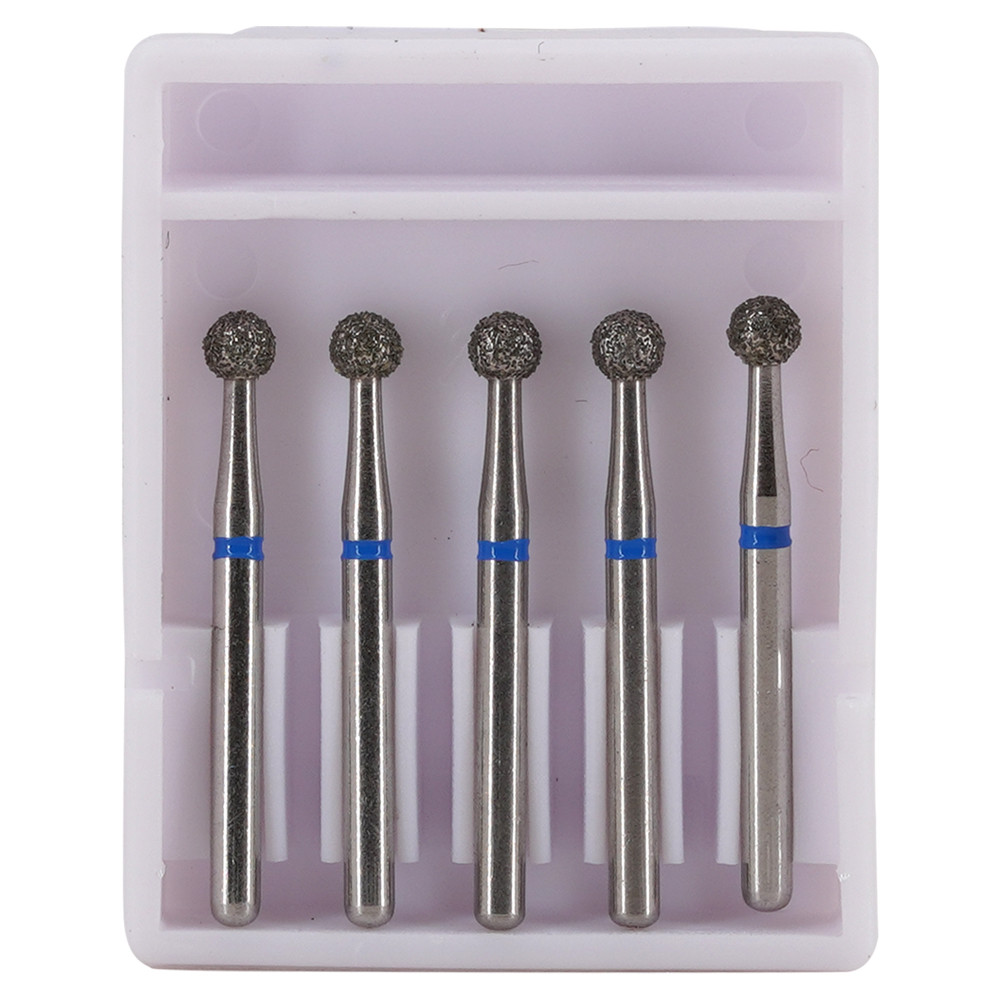
These specialized diamond-shaped dental burs are manufactured from German stainless steel to achieve precise cutting of teeth structures. The standard grit length of 9mm ensures precision and a smooth finish during dental procedures.
Dental Acrylic Cutting Burs
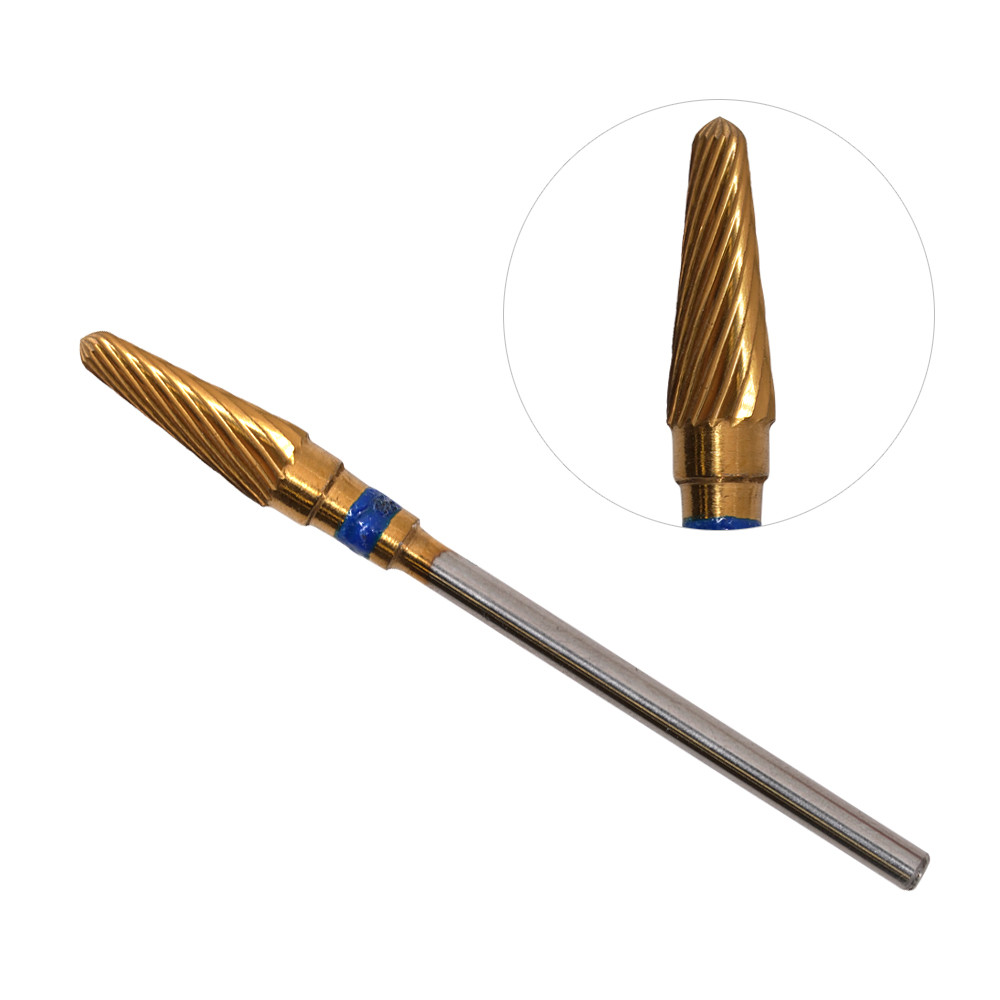
Crafted from German stainless steel, these specialized dental acrylic cutting burs are commonly used in dentures. Their design offers precise and accurate reshaping of dental acrylic resin. These special dental acrylic cutting burs are available in two unique variations, i.e., regular cross-cut and regular plain cut.
Shannon Handpiece Bone Burs
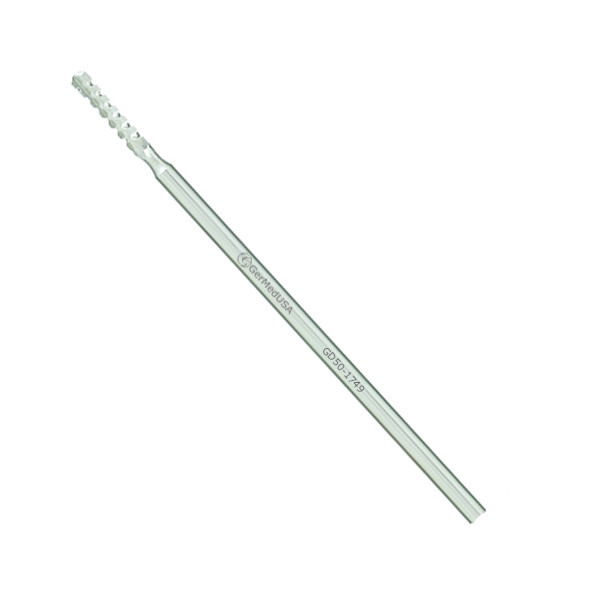
The Shannon handpiece bone burs are specialized instruments meticulously crafted for performing excavations, cutting bone fragments, and perforations. Their specialized designs with serrated jaws make them ideal for jaw bone reshaping. They come in three variations, i.e., standard pattern shannon burs No. 43 (for regular handpiece), standard pattern shannon burs No. 44, and gold titanium nitride coated shannon burs (No.44).
Xcut Fissure Taper Dental Burs (Pack)
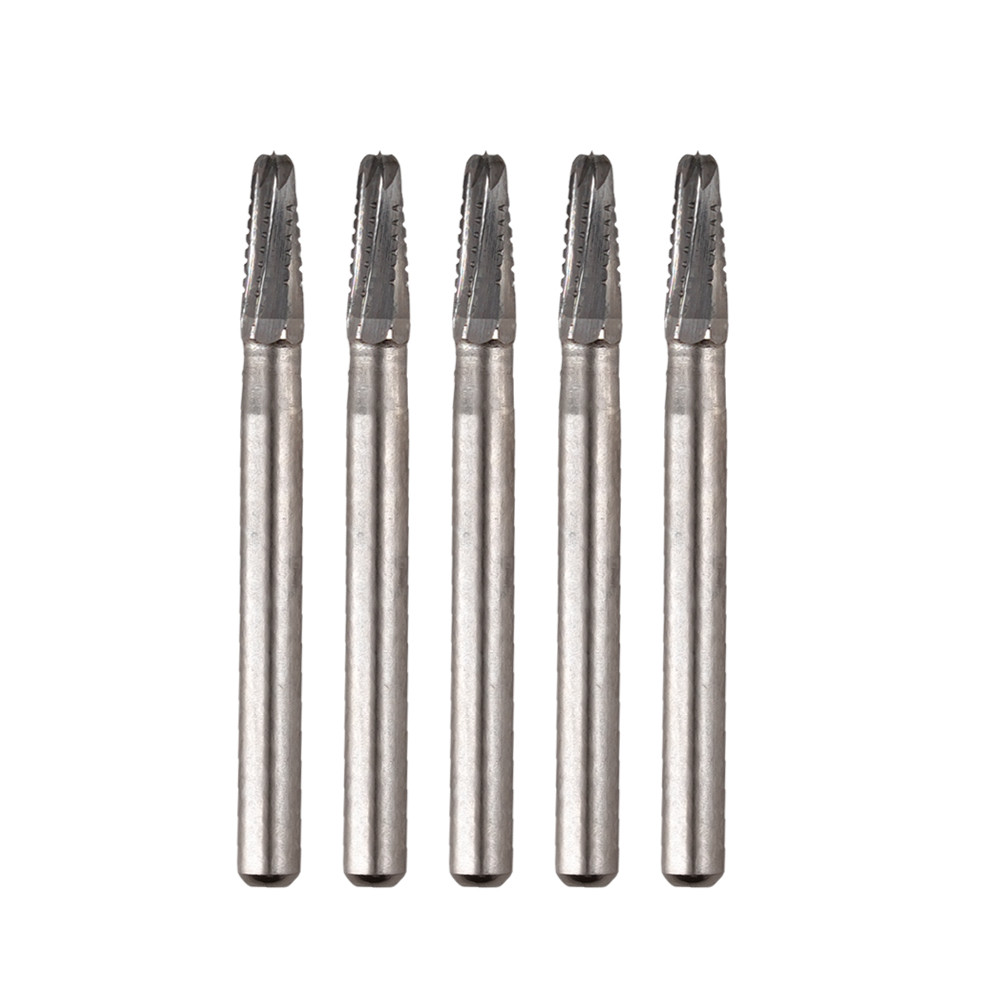
These types of Xcut fissure burs in dentistry come in special cone-like dental shapes manufactured to reach deep into the fissures to eliminate bacteria or debris and prepare them for sealant coatings. They come in different shapes to tackle multiple oral challenges and are made of high-quality materials.
Round Dental Burs (Pack)
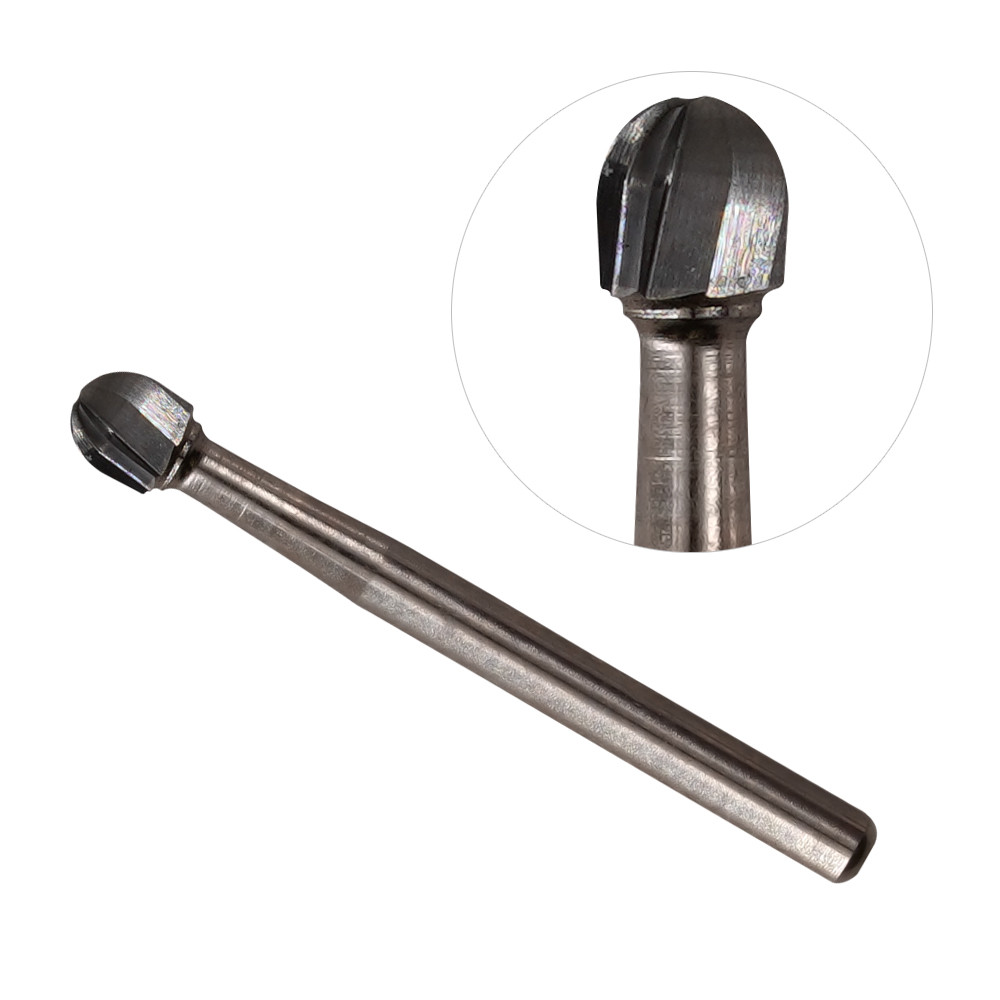
The specialized round dental burs are crafted to offer precision and accuracy when removing the old fillings and preparing the teeth for crown installments. This pack comes in 5-round burs of different lengths, i.e., 4 - 19mm FG, 8 - 19mm FG, 1/4 - 19mm FG, 3 - 44.5mm HP, 8 - 44.55 HP, and 6 - 19mm FG. The multiple sizes of round dental burs are catered to meet the various needs of surgeries and tooth types.
Inverted Cone Dental Burs (Pack)
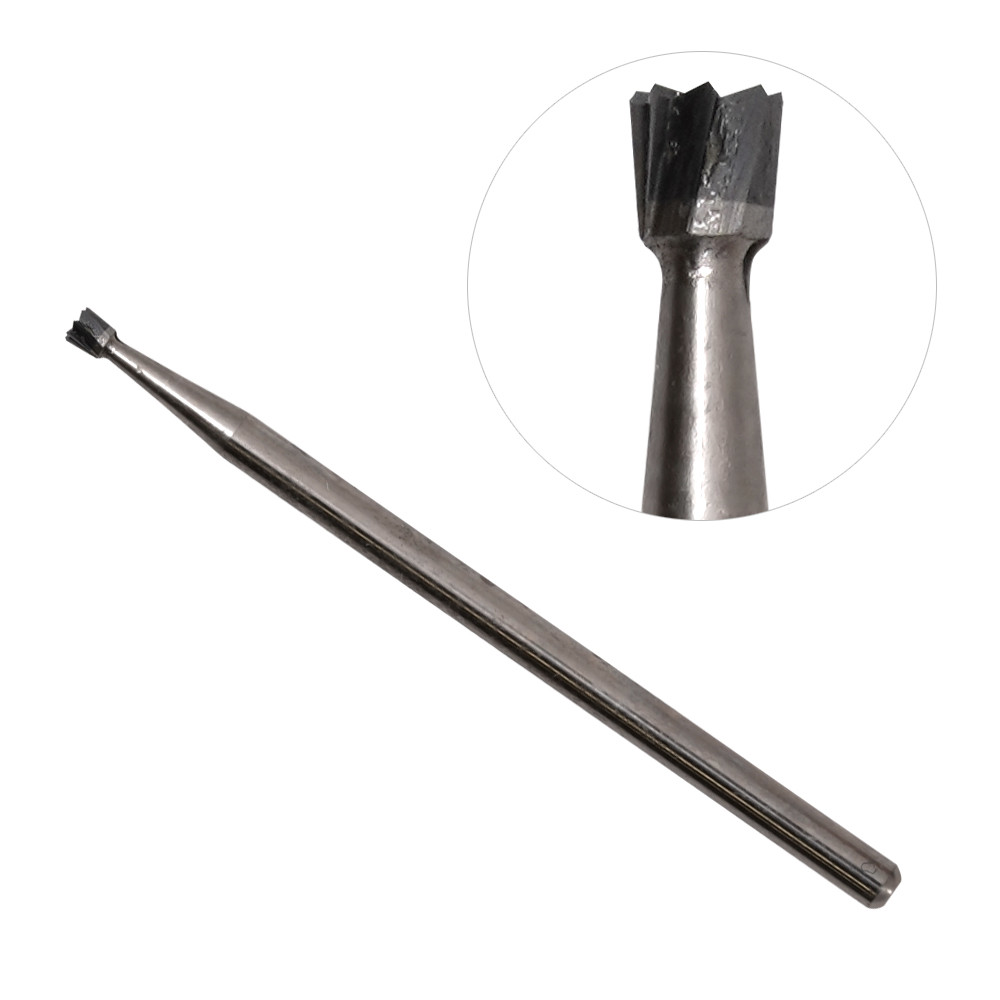
Crafted from German stainless steel, these precision-crafted inverted cone dental burs assist in preparing the teeth for fillings and creating concave surfaces in the tooth. These dental surgical instruments come in three different packs containing 5 burs of the same sizes and shapes, i.e., dental bur inverted cone 33 1/2 - 19mm FG, dental bur inverted cone 39 - 44mm HP, and dental bur inverted cone 19mm FG.
Proper Maintenance of Different Types of Dental Burs
Proper care and maintenance of dental burs are important to keep them in their optimal working condition.. Whether it’s a diamond bur or fissure, each dental bur type demands special care to prevent them from damage.
Here are the different steps you should take to maintain dental burs properly:
- Inspect for damage before use: Regular inspection of dental burs for corrosion, damage, or wear and tear is crucial. Remove the damaged dental burs from the lab.
- Clean after each use: It’s important to thoroughly clean the dental burs after each use to remove debris and biochemical materials that can damage the instruments. Use an enzymatic cleaner or brush for this purpose.
- Sterilization: Make sure to sterilize the dental burs in order to prevent cross-contamination. Use autoclaving, heat sterilization, or chemical sterilization methods.
- Proper storage: Always store the different types of burs in safe and dry areas to prevent damage and containment. Place them in specialized bur holders.
By following these tips, you’ll ensure that the dental burs remain in their precise condition and offer accuracy during dental surgeries.
Conclusion
Dental burs are important dental surgical instruments that come in various designs, including diamond burs, inverted cone burs, tapered burs, and fissure burs.
Crafted from highly durable and corrosion-free material, the different types of dental burs help dentists perform delicate surgical procedures with accuracy and minimal risk of errors.
At GerDentUSA, we offer German stainless dental burs that are not only sterilizable but also durable and corrosion-resistant.
We also offer customization options to help you get dental surgical instruments per your requirements. Explore and find what fits your needs best.
FAQs
How many types of dental burs are there?
There are many dental bur types, but they are primarily categorized into 5 main variations, i.e., round burs, diamond, inverted cone burs, tapered fissure burs, and straight fissure burs. Each dental bur type is manufactured for specific dental operations.
What are dental burs used for?
Dental burs are small hand-gripped instruments used to remove decay from teeth, prepare teeth for filling, etc. These dental surgical instruments come in different shapes and sizes to perform multiple dental tasks.
What burs are needed for crown cutting?
Dentists use dental diamond burs for cutting crowns. These special types of dental burs offer a smooth finish and rotate without the risk of chipping or fracturing the crown material.
How do you sterilize dental burs?
The best methods to sterilize dental burs are autoclaving, dry-heat, and cold sterilization. After sterilization, dental burs should be stored in a clean and dry environment.

